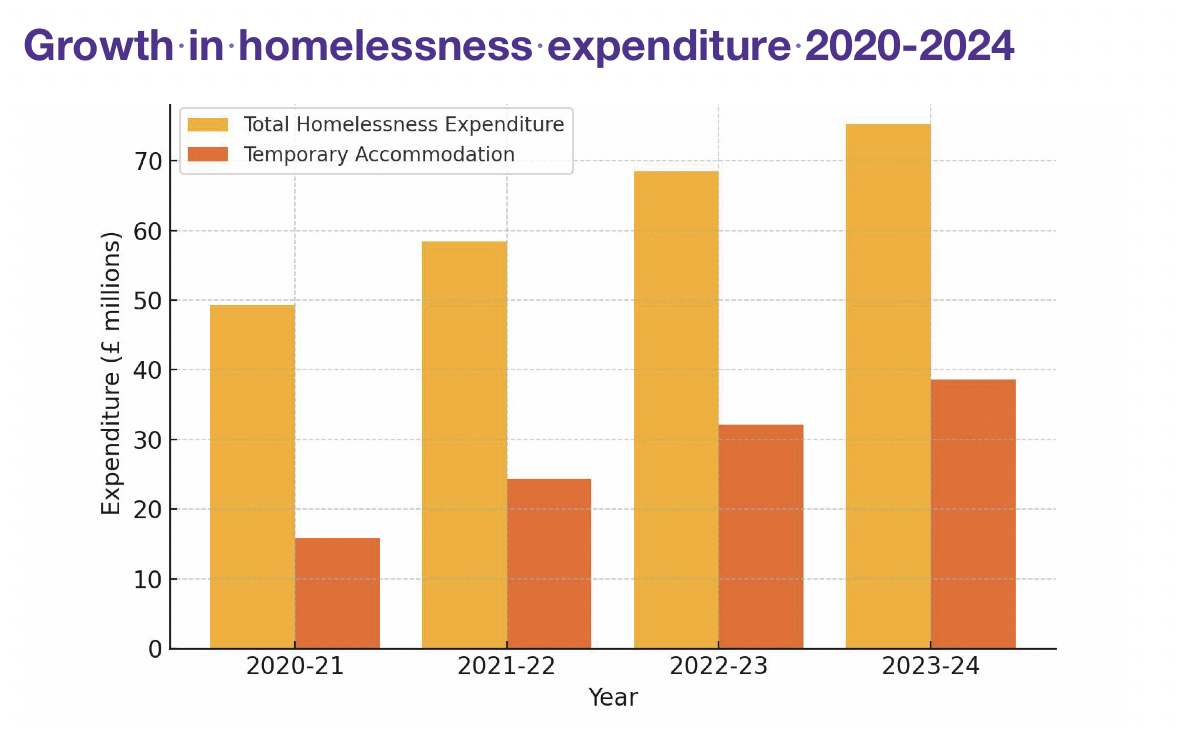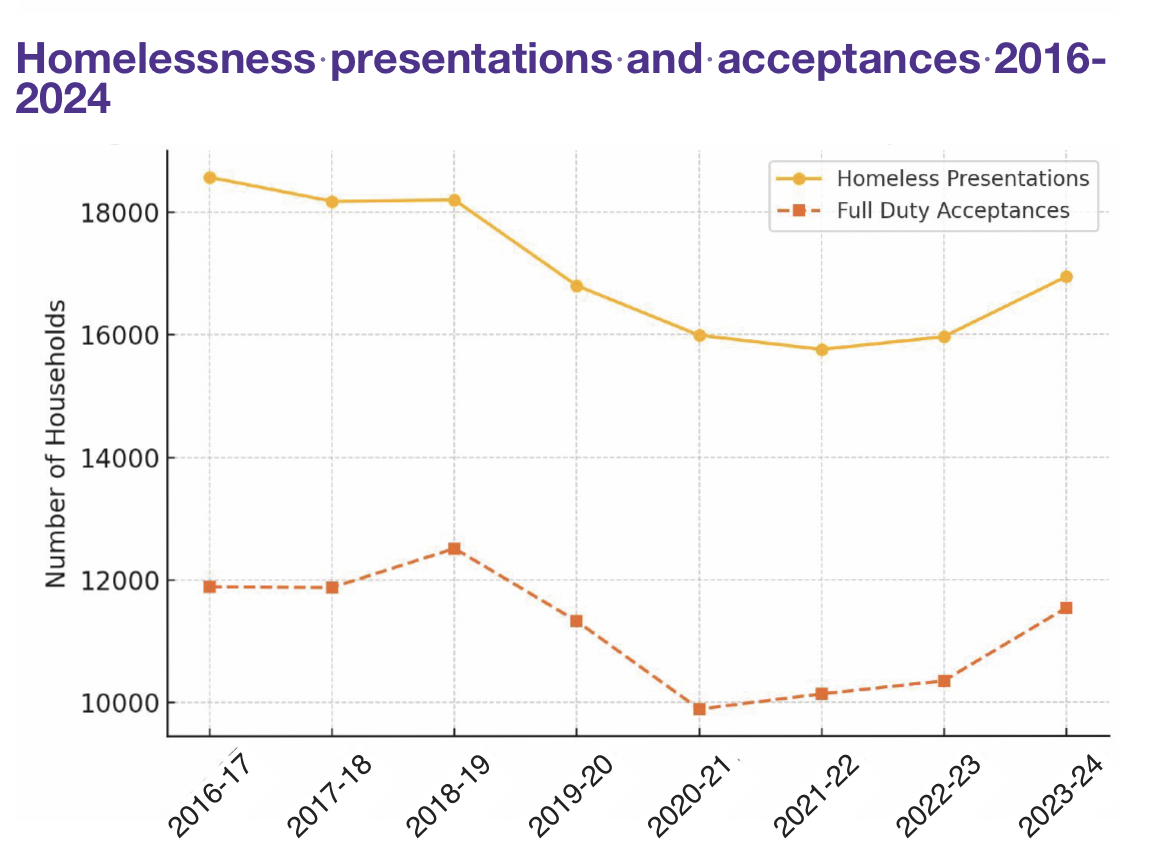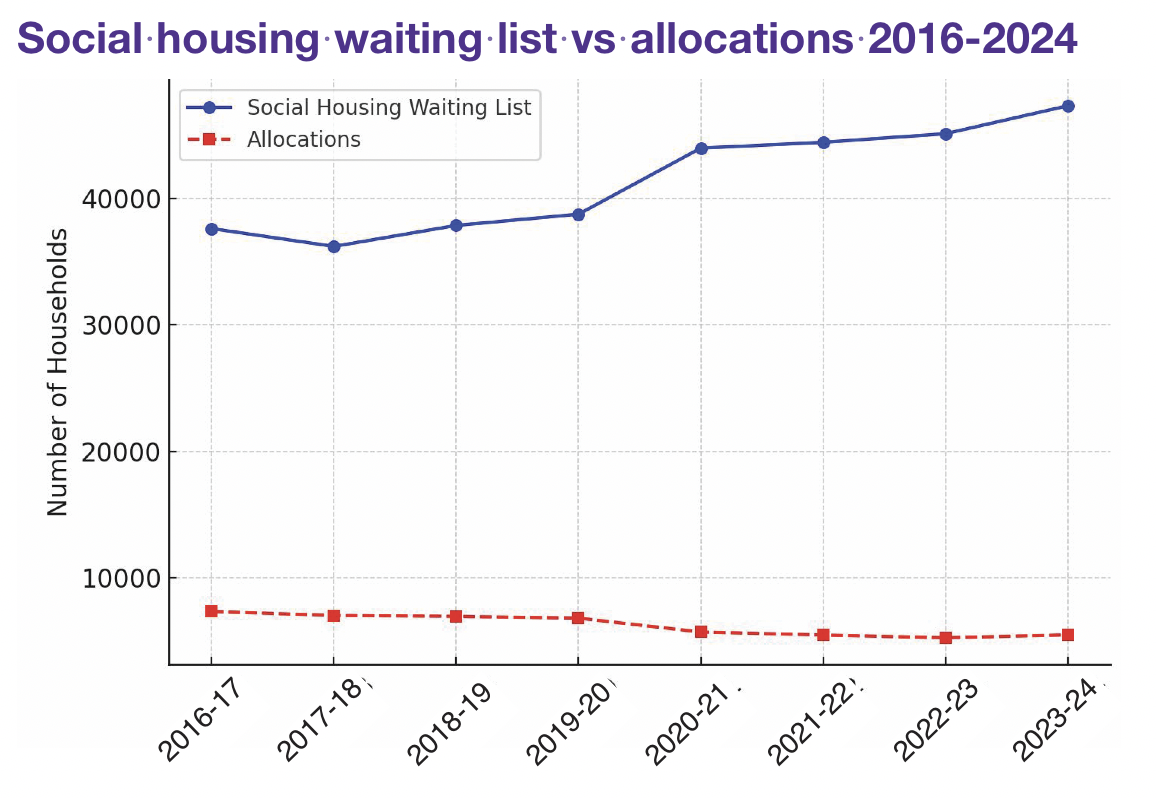
The rising demand for temporary accommodation is causing “potentially unsustainable financial pressure for homelessness services in Northern Ireland”, a report by the Northern Ireland Audit Office (NIAO) asserts.
With homelessness presentations exceeding 17,000 in 2023/24 and over 29,000 households on the social housing waiting list, urgent intervention is required to prevent the system from becoming overwhelmed.
The report, entitled Homelessness in Northern Ireland and published in late-March 2025, says that homelessness in Northern Ireland extends beyond rough sleepers and includes thousands of individuals and families living in inadequate conditions, temporary accommodations, or informal housing arrangements.
The statutory definition of homelessness, set out in the Housing (Northern Ireland) Order 1988, includes individuals with no available accommodation anywhere in the UK or beyond.
The data paints a concerning picture. While the number of people presenting as homeless has fallen marginally since 2017, demand for temporary accommodation has increased significantly. On any given night, over 4,700 households are housed in temporary arrangements – an increase of 3,000 since 2017.
Expenditure on temporary accommodation has risen significantly from £7.6 million in 2018/19 to £38.6 million in 2023/24, with hotels and B&Bs being allocated a disproportionate share of the budget.
Housing supply
At the core of the crisis is the severe shortage of social housing. More than half of the 29,000 homeless households on the waiting list have been waiting for over two years, and 12,000 have been on the list for more than four years. The shortfall in new social housing is widening, with the annual target of 2,000 new units being reduced to 1,500 due to funding constraints. Compounding this issue is the existence of void social housing stock, with inconsistencies in the monitoring and management of these properties.
The report also highlights a fragmented and inefficient governance structure. Despite multiple oversight groups, including the Homelessness Strategy Steering Group and the Central Homelessness Forum, progress towards strategic objectives has been minimal. There is a lack of clear accountability, with many of these groups duplicating efforts rather than streamlining support services.
Additionally, the Interdepartmental Homelessness Action Plan (IDHAP), intended to foster collaboration between government departments, has failed to deliver meaningful cross-departmental cooperation. While there are some positive examples, such as the Complex Lives project in Belfast, the NIAO nonetheless states that broader interagency coordination remains weak.
The financial cost of inaction
The financial implications of the homelessness crisis extend far beyond the cost of temporary accommodation. The report says that preventing homelessness could result in significant long-term savings across public services, particularly in health, justice, and welfare. Despite this, less than 10 per cent of homelessness spending in Northern Ireland is allocated to prevention, and annual funding requests for prevention initiatives have frequently been rejected by the Executive.
Without a shift towards prevention, the burden on temporary accommodation, the report asserts, will continue to grow. The report emphasises that the current approach is “unsustainable,” warning that demand for homelessness services could reach a “breaking point”.
Recommendations for reform
The NIAO report outlines several critical recommendations, including:
- A new approach to prevention: The Northern Ireland Housing Executive (NIHE) must establish a robust system for recording prevention outcomes to ensure resources are effectively targeted.
- Reducing reliance on hotels and B&Bs: The NIHE should develop a strategy to minimise its use of expensive temporary accommodations and establish a time-bound action plan for implementing value-for-money principles.
- Better use of existing housing stock: The NIHE must work with registered housing associations to identify and utilise long-term void properties as temporary accommodation.
- Improved governance and oversight: A review of governance structures is needed to reduce duplication, clarify responsibilities, and ensure a more outcome-focused approach.
- Funding and monitoring social housing targets: The Department for Communities and the NIHE should improve transparency around social housing development targets and track the gap between projected need and actual delivery.



Commenting on the report’s findings, Comptroller and Auditor General, Dorinnia Carville, said: “There is currently an unprecedented demand for homelessness services, in particular temporary accommodation, which has been impacted by an inadequate supply of social housing, the impact of Covid-19 and the cost-of-living crisis.
“Homelessness has impacts across society, with long term consequences for health and education outcomes, and the costs to the public purse are significant and rising. Dealing with these issues is complex and my report acknowledges the efforts being made by the Housing Executive and those working in the sector under challenging circumstances.
“However, in order to ensure the best use of public money, there is a need to reduce spending on hotels and B&Bs, and for an increased focus on homelessness prevention and the supply of new social housing. Until these key issues are resolved, demand for homelessness services is likely to continue to escalate to a point where it may become financially unsustainable.”





